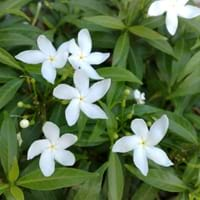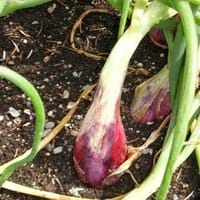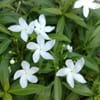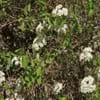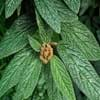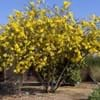Life Span
Annual and Perennial
Annual
Type
Broadleaf Evergreen
Vegetable
Origin
India, Southeast Asia
Asia
Types
Not Available
Not Available
Habitat
gardens, Homesteads
Not Available
USDA Hardiness Zone
10-15
4-8
AHS Heat Zone
Not Available
12-1
Sunset Zone
21,22
A1, A2, A3, H1, H2, 1a, 1b, 2a, 2b, 3a, 3b, 4, 5, 6, 7, 8, 9, 10, 11, 12, 13, 14, 15, 16, 17, 18, 19, 20, 21, 22, 23, 24
Habit
Spreading
Clump-Forming
Flower Color Modifier
Bicolor
Bicolor
Fruit Color
Brown
Not Available
Leaf Color in Spring
Dark Green
Green, Light Green
Leaf Color in Summer
Dark Green
Green, Light Green, Chartreuse
Leaf Color in Fall
Dark Green
Green, Yellow green
Leaf Color in Winter
Dark Green
Not Available
Plant Season
Spring, Summer, Fall, Winter
Summer
Sunlight
Full Sun, Partial Sun
Full Sun, Partial Sun
Type of Soil
Loam, Sand
Loam, Sand
The pH of Soil
Acidic, Neutral
Neutral
Soil Drainage
Not Available
Well drained
Bloom Time
Indeterminate
Summer
Tolerances
Not Available
Drought
Where to Plant?
Ground, Pot
Ground
How to Plant?
Seedlings, Stem Cutting
Cuttings
Plant Maintenance
Medium
Medium
Watering Requirements
Keep the ground moist but not water-logged, Requires watering in the growing season, Use Mulches to help prevent water loss during hot and windy weather, Water more in summer
Average Water Needs
In Summer
Lots of watering
Lots of watering
In Spring
Moderate
Moderate
In Winter
Average Water
Average Water
Soil pH
Acidic, Neutral
Neutral
Soil Type
Loam, Sand
Loam, Sand
Soil Drainage Capacity
Not Available
Well drained
Sun Exposure
Full Sun, Partial Sun
Full Sun, Partial Sun
Pruning
Cut or pinch the stems, Do not prune during shooting season, Prune if you want to improve plant shape, Prune to control growth, Prune when plant is dormant, Remove deadheads, Shape and thin as needed
Remove damaged leaves, Remove dead branches, Remove dead leaves
Fertilizers
All-Purpose Liquid Fertilizer
All-Purpose Liquid Fertilizer
Pests and Diseases
Nematodes, Scale, Spider mites
Red blotch
Plant Tolerance
Not Found
Drought
Flower Petal Number
Single
Single
Fragrant Bark/Stem
No
Yes
Foliage Texture
Medium
Medium
Foliage Sheen
Glossy
Matte
Attracts
Bees, Butterflies, Insects
Aphids, Beetles
Allergy
Skin irritation
Cold, Irritate the mucus membrane, Sinuses
Aesthetic Uses
Beautification, Ground Cover, Showy Purposes, Used for decorating walls, fences, gates, hedges, etc.
Not Used For Aesthetic Purpose
Beauty Benefits
Not Available
Not Available
Environmental Uses
Air purification
Air purification
Medicinal Uses
Antipyretic, Astringent, Cough, Kidney problems, Kidney Stones, Scabies, Ulcers
anti-inflammatory, Antiseptic, Antispasmodic, Hypotensive
Part of Plant Used
Flowers, Leaves, Root
Flowers, Leaves, Root
Other Uses
Showy Purposes
Cosmetics, Used as a dye
Used As Indoor Plant
No
No
Used As Outdoor Plant
Yes
Yes
Garden Design
Container, Feature Plant, Hedges, Mixed Border, Tropical
Edible, Herb / Vegetable
Botanical Name
Tabernaemontana Divaricata
ALLIUM cepa( Aggregatum Group)
Common Name
Crepe Jasmine
Scallion, Shallot
In Hindi
Tabernaemontana
Shallot
In German
Tabernaemontana
Schalotte
In French
Tabernaemontana
échalote
In Spanish
Tabernaemontana
chalote
In Greek
Tabernaemontana
είδος κρεμμυδιού
In Portuguese
Tabernaemontana
Sallot
In Polish
Tabernaemontana
Sallot
In Latin
Tabernaemontana
Sallot
Phylum
Magnoliophyta
Tracheophyta
Class
Magnoliopsida
Magnoliopsida
Order
Gentianales
Asparagales
Family
Apocynaceae
Liliaceae
Genus
Tabernaemontana
Allium
Clade
Angiosperms, Asterids, Eudicots
Angiosperms, Monocots
Tribe
Not Available
Not Available
Subfamily
Rauvolfioideae
Not Available
Importance of Crape Jasmine and Shallot
Want to have the most appropriate plant for your garden? You might want to know the importance of Crape Jasmine and Shallot. Basically, these two plants vary in many aspects. Compare Crape Jasmine and Shallot as they differ in many characteristics such as their life, care, benefits, facts, etc. Every gardener must at least have the slightest clue about the plants he wants to plant in his garden. Compare their benefits, which differ in many ways like facts and uses. The medicinal use of Crape Jasmine is Antipyretic, Astringent, Cough, Kidney problems, Kidney Stones, Scabies and Ulcers whereas of Shallot is anti-inflammatory, Antiseptic, Antispasmodic and Hypotensive. Crape Jasmine has beauty benefits as follows: Not Available while Shallot has beauty benefits as follows: Not Available.
Compare Facts of Crape Jasmine vs Shallot
How to choose the best garden plant for your garden depending upon its facts? Here garden plant comparison will help you to solve this query. Compare the facts of Crape Jasmine vs Shallot and know which one to choose. As garden plants have benefits and other uses, allergy is also a major drawback of plants for some people. Allergic reactions of Crape Jasmine are Skin irritation whereas of Shallot have Cold, Irritate the mucus membrane and Sinuses respectively. Having a fruit bearing plant in your garden can be a plus point of your garden. Crape Jasmine has no showy fruits and Shallot has no showy fruits. Also Crape Jasmine is not flowering and Shallot is not flowering . You can compare Crape Jasmine and Shallot facts and facts of other plants too.
